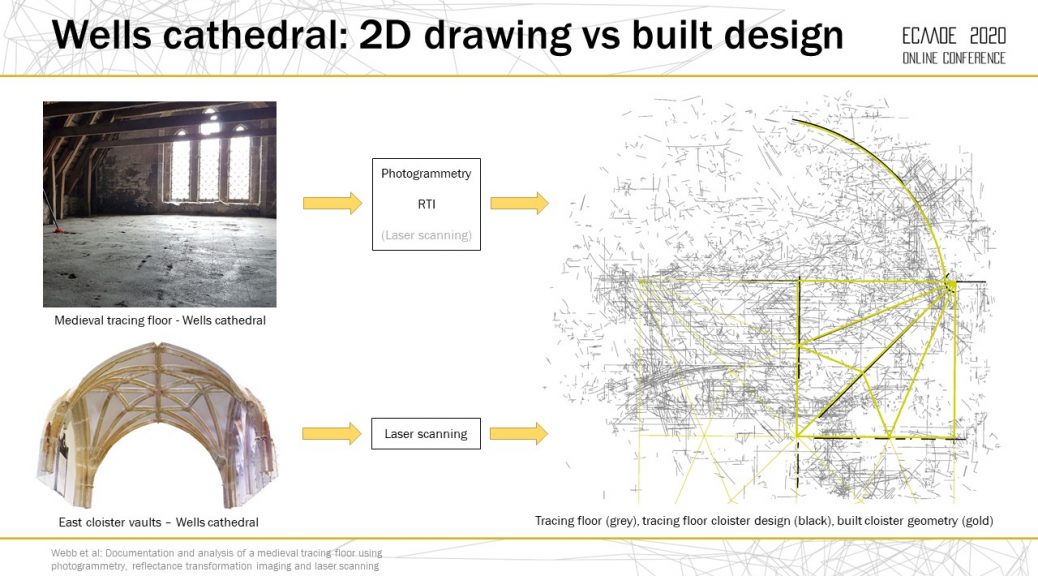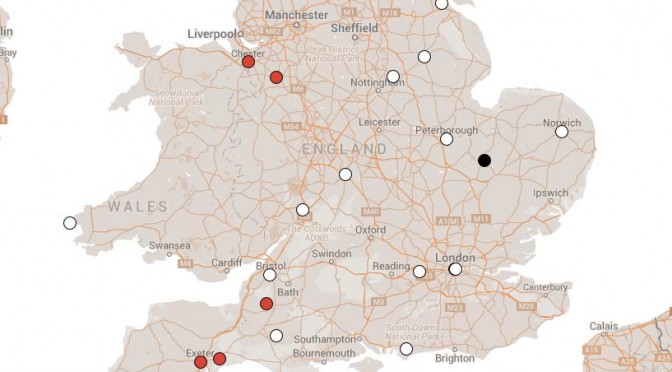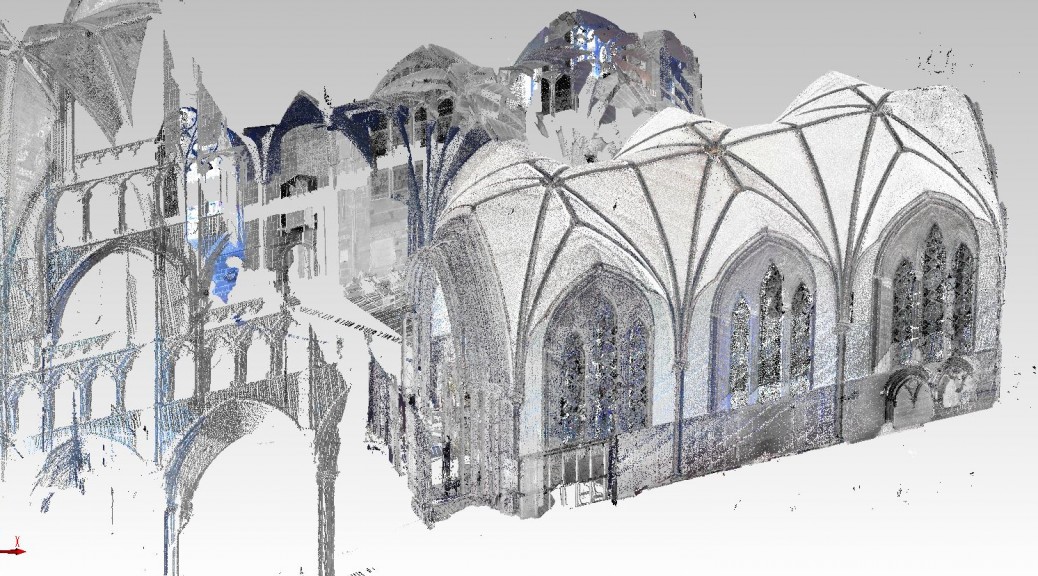In September 2020 we were due to visit Berlin to attend the eCAADe conference, however, COVID-19 shifted proceedings online. Our paper, written by the entire project team, documented and analysed the Medieval tracing floor at Wells cathedral using photogrammetry, reflectance transformation imaging and laser scanning. We presented a summary of our findings via a pre-recorded video and written paper. You can find links to these below, as well the paper abstract. We look forward to attending eCAADe and other conferences in person again once it’s safe to do so.
Documentation and analysis of a medieval tracing floor using photogrammetry, reflectance transformation imaging and laser scanning
Abstract
The fifteenth-century tracing floor at Wells cathedral is an extremely rare survival in European architecture. Located in the roof space above the north porch, this plaster floor was used as a drawing and design tool by medieval masons, the lines and arcs inscribed into its surface enabling them to explore their ideas on a 1:1 scale. Many of these marks are difficult to see with the naked eye and existing studies of its geometry are reliant on manual retracing of its lines. This paper showcases the potential of digital surveying and analytical tools, namely photogrammetry, reflectance transformation imaging (RTI) and laser scanning, to extend our knowledge of the tracing floor and its use in the cathedral. It begins by comparing the recording processes and outputs of all three techniques, followed by a description of the digital retracing of the tracing floor to highlight lines and arcs on the surface. Finally, it compares these with digital surveys of the architecture of the cathedral cloister.


